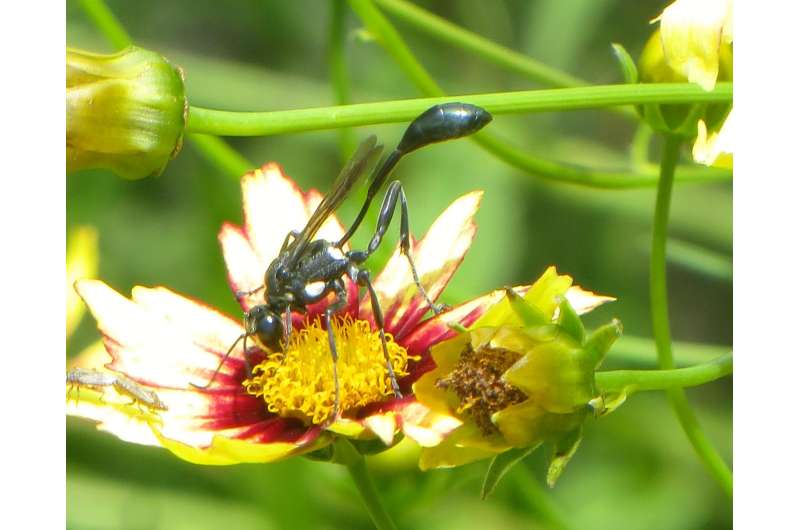Ornamental plants for conserving bees, beneficial insects

Insects play a vital role in ecosystem health, helping to aerate soil, keeping the natural system in balance, and preventing detrimental pests from taking over essential natural resources. Additionally, insects provide critical biological services such as pollination and biological controls. The authors of a study in the August 2106 issue of HortScience say that flowering ornamental plants have the potential to support beneficial insect communities, such as pollinating bees, wasps, and predatory plant bugs.
Bethany A. Harris, S. Kristine Braman, and Svoboda V. Pennisi from the University of Georgia conducted visual observations and sampled via sweep nets to assess the potential of flowering ornamentals to act as a conservation resource for pollinators. "By monitoring pollinator and beneficial insect occurrence within habitat management sites, ornamental plant species can be evaluated for their arthropod attractiveness and the provision of arthropod mediated ecosystem services," said Bethany Harris, lead author of the study.
The research included visual observations and sweep-net sampling in four research plots at the University of Georgia's Griffin Campus. The plots, called the "Butterfly" and "Conservation" Gardens, included 74 commercially available annual and perennial herbaceous and shrub ornamentals, including exotic and native plant species.
"The gardens attracted a diverse population comprised of pollinators (30+ species and 16+ families) and beneficial insects (20+ species and 9+ families)," Harris noted. Hoverflies, skippers, predatory plant bugs, and parasitic wasps were frequent visitors to Butterfly and Conservation Gardens. "In addition, species of native bees were identified in the gardens, suggesting that pollinator habitats could be created in southeastern landscapes using these taxa."
Celosia, Gaura, Lantana, and Nepeta xfaassenii were some of the most-visited plants by both pollinators and beneficial insects. "This could be due to the vibrant colors, rich nectar and pollen supply, and the variety of floral inflorescences these plants possess," Harris said. Agastache and Celosia were the most frequently visited by pollinators among 74 plant taxa.
"To the best of our knowledge, this study is the first to document the response of pollinators and natural enemies to plantings of ornamental plants suitable for southeastern landscapes," the authors noted. They said that determining which plants will provide adequate resources at different times in the growing season is one of the first steps toward conservation of bees and other beneficial insects. "Using these data, recommendations can be provided on the use of flowering ornamental plants for pollinator and beneficial insect conservation purposes as well as sampling methods that can be employed to effectively survey beneficial insect communities."
More information: ASHS HortScience: hortsci.ashspublications.org/c … t/51/8/1016.abstract
Journal information: HortScience
Provided by American Society for Horticultural Science





















